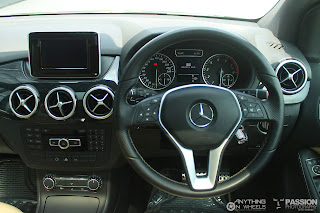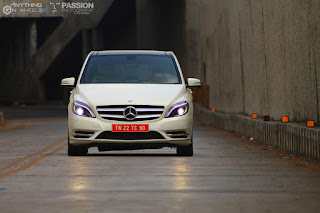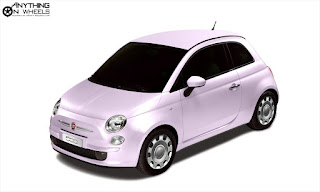When the Figo was launched in 2010, it created quite a stir in the market, winning every single 'Car of the Year' award given by media outlets before going on to become 'the most awarded car ever' on Indian roads. As a result, the market responded favorably and the Figo was an instant success, giving Ford India unprecedented volumes and market penetration. Figo's trump-card was its pricing, with none of the other premium hatchbacks managing to beat it on the 'value for money' factor. The fact that it was a premium hatchback with a not so premium price tag caught on in India and Ford doesn't want to change that. So, when they decided to give the Figo a mid-cycle facelift, the 'VFM' content was left intact.

What's new in the all-new Figo then, that boasts "Change is a wonderful thing" in it's advertisements? In short, it has got some tweaks on the outside, a few minor touches on the inside and a couple of barely-noticeable calibration changes under the hood. Are these enough to keep the Figo rolling amidst growing competition? We drove the Figo Diesel EXI, one of the more popular variants and the one that best exhibits Figo's VFM proposition, to find out.
TO LOOK AT:


Let's be fair, the Figo wasn't a modern-looking car even when it made its debut here. So, to expect Ford to do a magic with this facelift would be foolish. But, did the much-publicized facelift do something to improve the looks of the Figo? The answer is only a 'partial yes'. Firstly, the changes are too minimal that many on-lookers will find it really difficult to differentiate the new car from the old. Secondly, Ford has tried to incorporate it's latest 'Kinetic' design theme in an aged body-shell, resulting in a mix of old and new. Having said that, the Figo isn't a bad-looking car. The straight lines all around, despite being dated, gives the Figo a clean and balanced look that would offend none.

With this facelift, the car now sports clear-lens headlight clusters, a chrome-slatted grille, an hexagonal air-dam in the front bumper and new taillight lenses. While the clear lenses and significant detailing in the headlights does try to impress, we miss those racy blackened clusters of the old Figo that earned itself quite a lot of fans. The upward-sloping window-line gives the car a tipped forward stance when viewed from profile. We might be scoffed at for stating this, but we quite like the vertical taillight clusters in the Figo. Another nice touch is the addition of a black plastic insert in the rear bumper that lends a sporty feel to the car. In the higher variants, subtle usage of chrome all around adds a touch of elegance.
There are two bright new colours added to the Figo palette with this facelift - Bright Yellow and Kinetic Blue.
What Ford has basically done is freshen up things a bit to ensure that the Figo stays on top of the list of choices when customers go hunting for a premium small car. The Figo will prove to be a sensible choice for those who prefer a no-nonsense look over something that's loud and flashy. If you are one among the latter, there are cars like Punto and i20 that's waiting for you.
TO SIT IN:
While the exterior tweaks do their best to hide the fact, that the Figo is actually based on a decade-old model is obvious once you step inside.

The dashboard is traditional, dominated by large, circular air-conditioning vents that are surrounded by hard, edgy plastics all around. But, the cabin makes up for it with an extremely practical layout that not only liberates abundant space, but is also user-friendly. The build quality is reasonably rugged that the interiors won’t fall apart and are capable of withstanding certain level of abuse. While we like the silver-colored plastics around the air-conditioning vents and gear knob, we aren't fond of the blue-colored center console, that is a total misfit in an otherwise lively cabin. There are a few ergonomic misses, the steering-column mounted audio controls in the higher variants and the hood release button near the front passenger door being prime examples.

The instrument console is simple and neatly laid out with a digital odometer, tripmeter and a distance-to-empty display apart from other regular warning lights. Being the second cheapest on offer, the EXI variant misses the tachometer but does not disappoint when it comes to features to price ratio. It comes reasonably equipped with goodies like central locking, keyless entry, air-conditioning, remote fuel filler and boot opening and front power windows offered as standard. For those who can't miss out on important features like ABS, airbags and music system with Bluetooth connectivity, Ford sells the top-end Titanium variant that offers all these and much more. The absence of rear power windows is a glaring omission though.
Pardon us, inspite of breaking our heads for almost a day, we couldn’t really find out a reason for Ford’s fetish over weird-colored dashboards. The strange ‘coral’ dashboard that was available as an option in the top-end 'Titanium' variant is, thankfully, not carried over to the facelift, replaced by a still-strange but likeable shade of ‘riviera blue’.
TO DRIVE:


Mid-cycle facelifts generally leave the power-train and other mechanicals untouched and the new Figo is no exception. Both the engines, the 1.2-liter ‘Duratec’ petrol and the 1.4-liter ‘Duratorq’ diesel that we have driven, are carried over with just minor calibration changes to improve their characteristics. With 69 ps of maximum power and 160 Nm of maximum torque, the Figo TDCi is great to drive both inside the city and out on the highway. A combination of excellent low and mid-range, non-existent turbo lag and linear power delivery all through the range ensures that the Figo doesn’t run out of grunt easily. Once the triple digit speeds are reached though, the progress slows down considerably and that’s when the Figo leaves you wanting for more.
The independent McPherson struts up front and the coil springs at the rear do a very good job of absorbing the bumps and potholes on the road. The ride quality, as a result, is good and the occupants are not thrown around inside like in many other small cars. Loud thuds do filter into the cabin over irregular road surfaces though and our car, with just around 1000 kilometers on the odo, has already started developing a few squeaks and rattles.


But, it's all forgiven when you are behind the wheel. There is some magic that Ford Motor Company's engineers do in their cars that bestows them with amazing handling and sure-footedness. We experienced this in the Ikon and the Fiesta Classic and the Figo is no different. The way in which it responds to steering inputs, the eagerness that it exhibits to change directions as we wish and the grip levels that makes the car stay glued to the road at all speeds makes the Figo an exceptional handler, easily making it one of the best amongst all small cars on sale in India. While the chassis still begs for more, the engine gives up midway, which is a shame.
We are tired of waiting for a hot 1.6 S variant of the Figo and, by now, are pretty sure that Ford is not going to enthrall us enthusiasts. Let the rants stop.
SPECIFICATIONS:


* Engine Type: In-line, SOHC, TDCi
* No of Cylinders: 4
* Displacement: 1399 cc
* Maximum Power: 69 ps @ 4000 rpm
* Maximum Torque: 16.3 kgm @ 2000 rpm
* Transmission Type: 5-speed MT
* Tires: 175/65 R14
* Brakes: Ventilated Disc (Front), Drum (Rear)
WE VOTE FOR:
* Great value for money
* Superb road handling
* Generous passenger space
WE VOTE AGAINST:
* Dated design
* Lack of powerful engine options
TO SUM UP:
At the moment, the Figo is the only model that's keeping Ford India's cash registers ringing and it's not hard to know why. With a spacious cabin, feature-rich interiors, a tried and trusted diesel engine that's both reliable and fuel-efficient, superb handling and, above all, extremely competitive pricing, the Figo ticks the most number of boxes for an Indian small-car shopper. Yes, we would have liked a modern design in and out along with a bit more finesse and a more powerful engine, but for the price at which it retails, those factors wouldn't stop us from buying the Figo.


















































